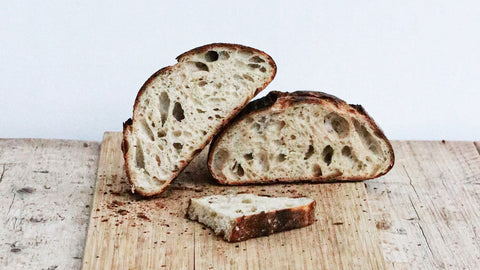The growing popularity of sourdough bread comes with one drawback - it is not the easiest bread in the world to slice! You’ll probably have discovered this for yourself, especially if you don’t possess the greatest of kitchen slicing skills.
So what type of knife is most effective at slicing through sourdough? Read on as we describe the fundamental elements that your knife should possess and the best way to perform the job.
The Blade
The most essential element of a knife to consider when it comes to bread cutting is the blade and there is one critical component necessary - a serrated edge. A serrated knife distinguishes itself from most knives due to the saw-like appearance of the knife’s edge. This specific design provides the tool with the capability to chisel its way through both a hard and soft exterior.
Knife Length
The ideal bread knife will be in excess of 7 inches long. Basically, the longer the blade the better and this is due to a number of factors:
- Saw action method
- Helps with longer loaves
Saw action method
In order to effectively cut through the hard outer shell of sourdough bread, the cuts need to be made with a sawing motion. This assures the best, most effective cut possible through the outer shell of the bread and into the doughy interior. This is why a lengthy knife is most effective as the back and forth sawing method requires a significant length blade in order to perform the action effectively.
Helps with longer loaves
Bread comes in all shapes and sizes, even where you may be used to shorter length loafs of bread, it is quite likely that you’ll encounter a lengthy loaf at some stage or another. Where this occurs, possessing an 8 or 9 inch serrated bread knife will be warmly welcomed.
Knife Thickness
Another important factor for cutting sourdough bread with a serrated knife is the thickness of the bevel. Generally speaking, a blade that is thin performs very well with crusty bread exteriors. Usually a knife that is designed to slice through crusty sourdough will have one smooth side while the other side will have a sharpened bevel. If the angle of the bevel is less than 16 degrees then you can expect an exceptional performance when it comes to slicing through the crusty exterior of your sourdough loaf.
The Steel
While most bread knives are made from stainless steel, the higher the quality of the steel, the better the performance. A knife made from damascus steel is much tougher and durable than most other types and, due to the high quality product, it will stay sharper for longer.
Blade Sharpness
A sharper knife is obviously better than a blunt knife no matter what kitchen task you are looking to accomplish. This is also true when it comes to confronting sourdough bread. With that said, most serrated knives are more durable than other types of knives in your kitchen set and it's largely due to the reduced friction that they use during the cutting process.
This is especially so when the knife is made of a high-quality steel such as Damascus. Where this is the case, you can go many months without the need to sharpen.
However, when that day arrives, it is important to sharpen the knife in the most effective way possible.
Sharpening a serrated bread knife
Due to the construction of a serrated bread knife, the process of sharpening a serrated knife differs slightly to that of the other knives in your collection. The most common of which is generally by using a sharpening stone such as a whetstone knife sharpener.
However, most make the mistake of sharpening the serrated knife when using a whetstone. This should be avoided. In general, the whetstone should be used to sharpen the flat side of the knife only due to its flat surface.
Once this is done it is best to utilize a more manual method to sharpen the serrated edge. One of the most common ways to achieve this is by utilizing a ceramic sharpening rod. The benefit of the rod is that it can be placed in between the edges and carefully used to sharpen each individual tooth of the serrated blade. While this is a very time consuming exercise, it is considered the most effective in order to return the serrated blade to its original sharp state.
